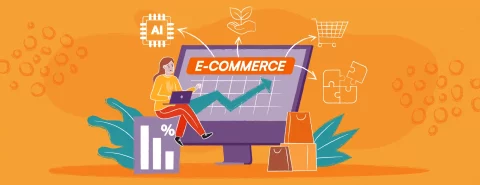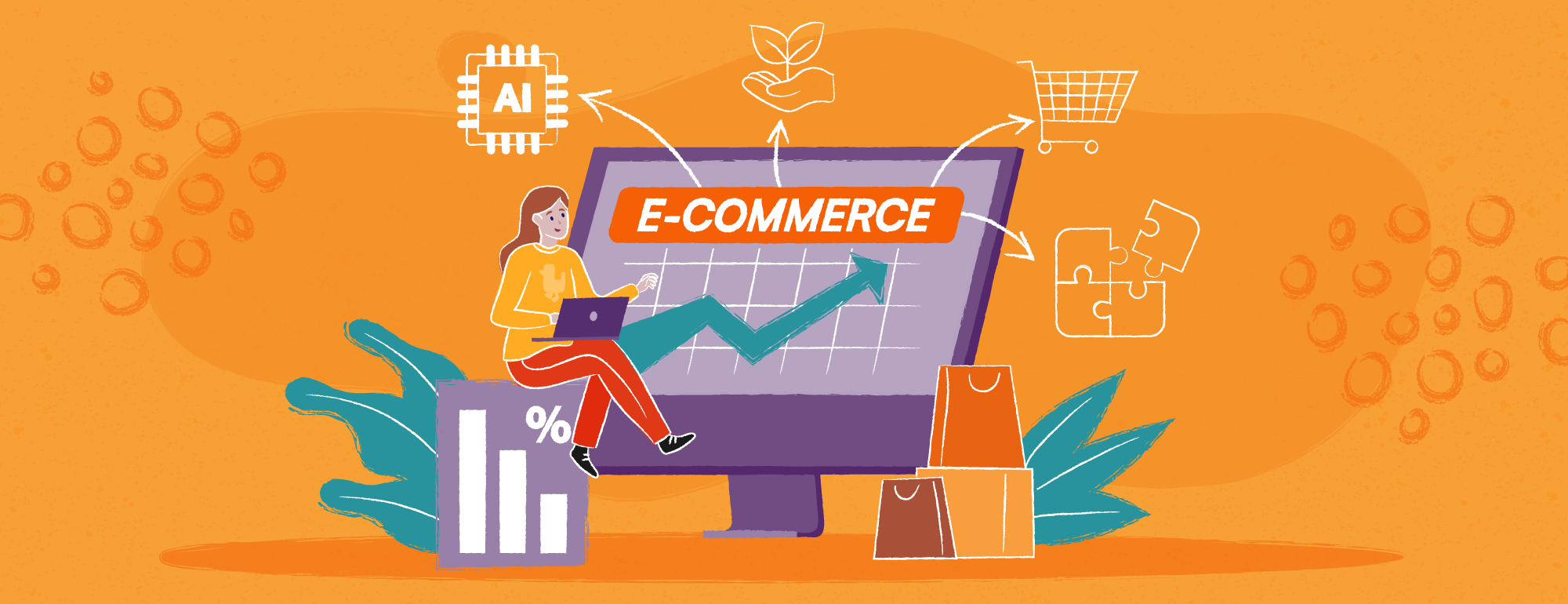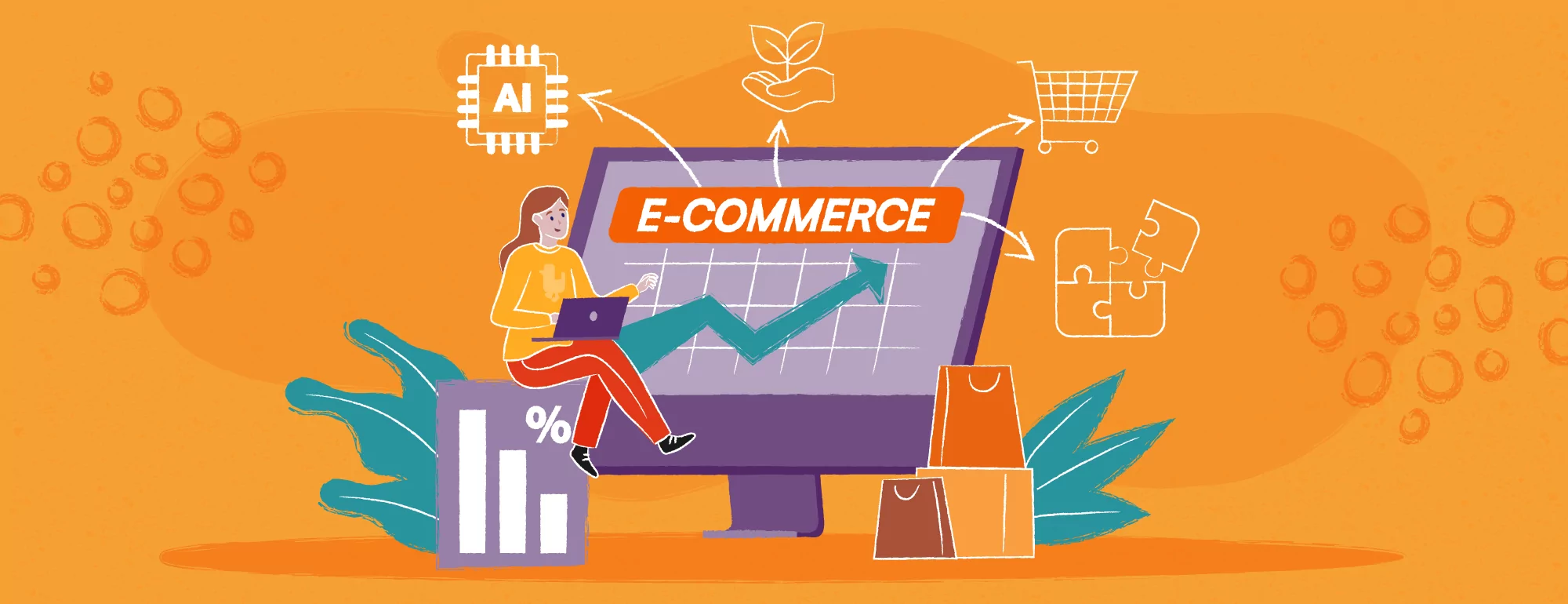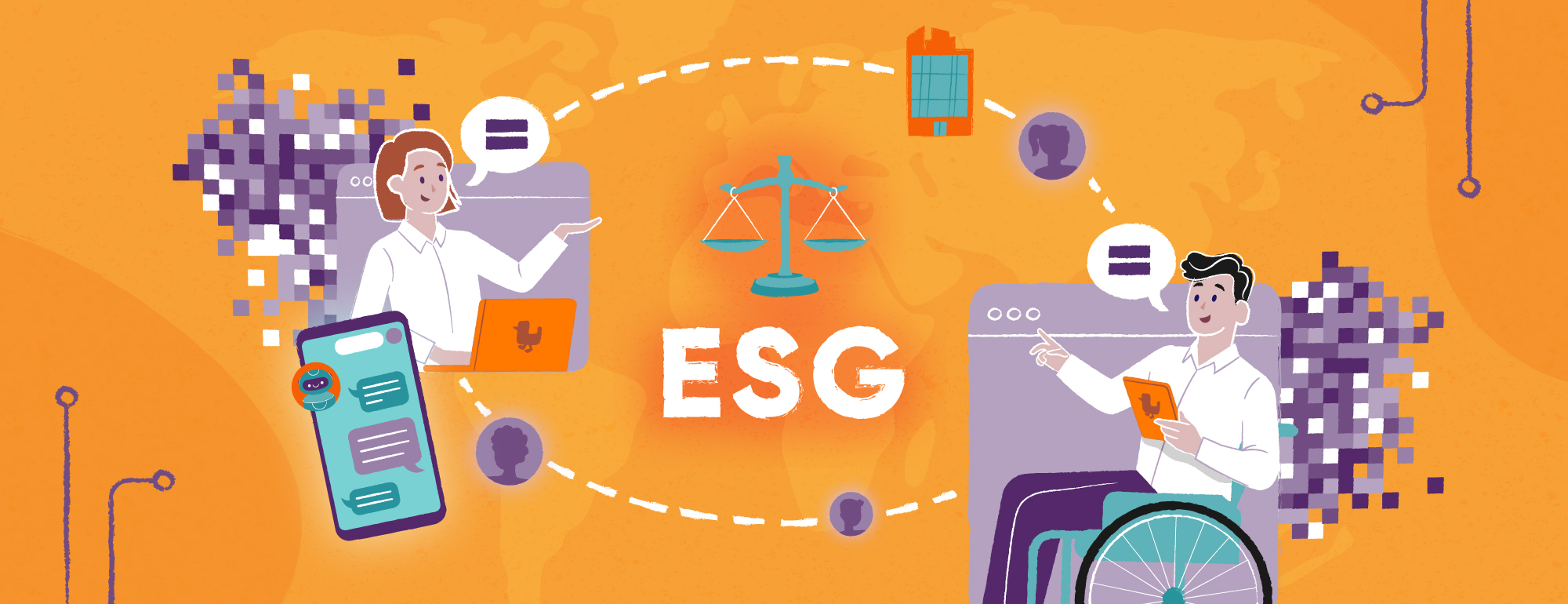E-commerce Trends 2024 / Developments in E-Commerce to Watch
2024 will likely be another big year for e-commerce and retail companies. It might not be record growth, but online sales are still as vital as ever. Reports suggest around 62% of all retailers plan to continue investing in ecommerce technologies next year – compared to the 14.3% cutting back.
So the obvious question is, what are they investing in? What are the next developments in e-commerce, which should you be keeping an eye on and, potentially, which should be key strategic areas of focus?
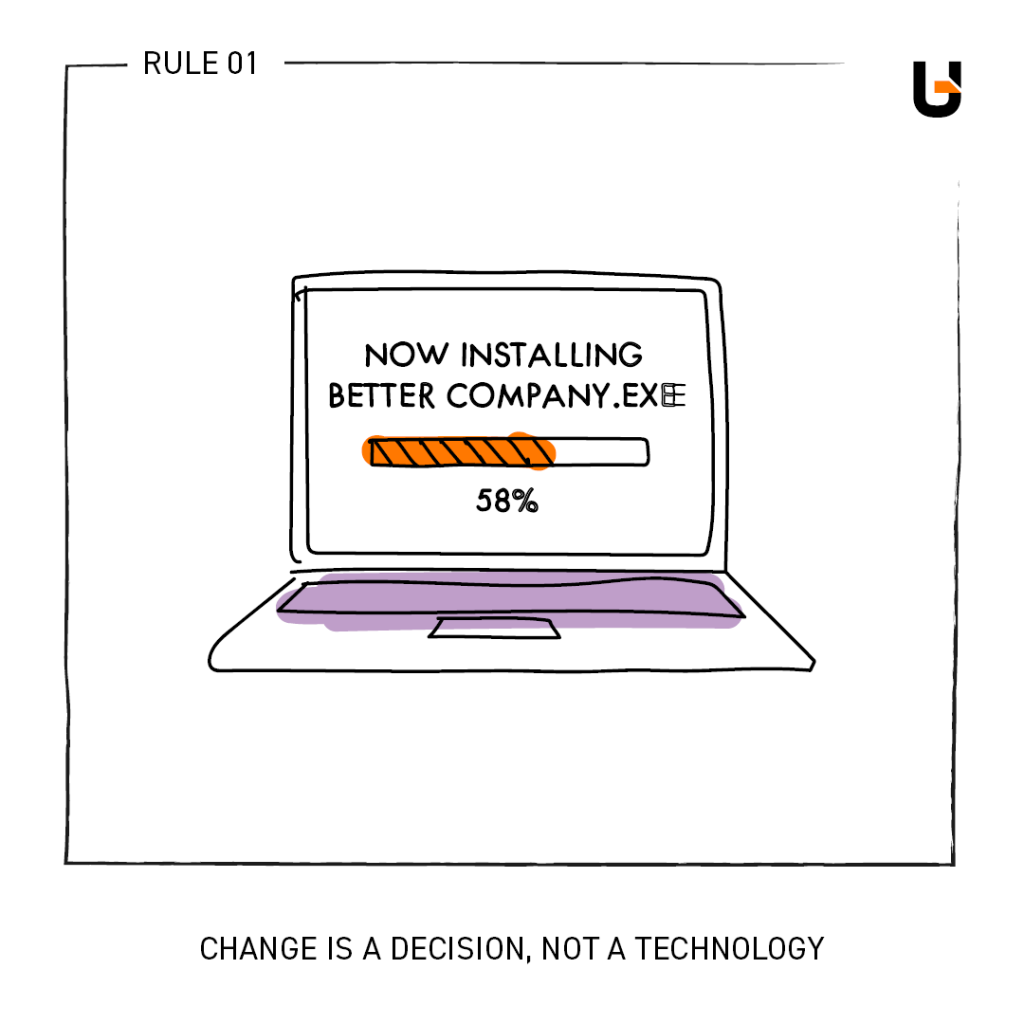
To help you settle into the New Year – and hopefully plan your strategic goals wisely 😉 – we’ve prepared some of the most vital e-commerce trends 2024 has to offer. These are based on our own experience, and the direction we see the market going.
Composable Business
Let’s start with one of the more obvious ones – composable has been around for a while, but it’s really picking up pace now. The legacy monolith’s days are numbered, as there are more than a few philosophies and business approaches spreading around similar concepts:
- Composable Commerce is one such origin, referring to commerce businesses that break up their business processes into smaller, rearrangeable components.
- There’s also MACH architecture, which is very similar…. Even if the C doesn’t stand for Composable 😉
- Then there’s the likes of Multiexperience and Total Experience that, even if they don’t outright say it, recommend developing the best solutions for every channel through composable modularity.
But it’s also not brand new either, so what gives? Gartner mentioned Composable Commerce as a key e-commerce trends for 2022. Due to a volatile economy the last year or so, we know it hasn’t been easy for companies to invest in overhauling their architecture. But even then, we’ve seen companies begin to embrace modularity in upcoming expansions. One step at a time…
And let’s also get our obvious marketing plug out of the way 😉 If you’re interested in migrating to a composable approach, we fully support you! We have a handy composable commerce ebook for you to download and everything….
Environmental Sustainability & Responsible Consumption
Today’s shoppers are much more conscious about their decisions then they were just a few years ago. Not only do they want to make responsible decisions with their products, they also want to work with brands and providers that are equally responsible.
The outcome of this is that products supported by ESG claims have a cumulative growth of 28% compared to 20% for those without. Customers have well and truly spoken.
We expect to see this evolve more than just standard ESG reports and declarations. As further green initiatives develop throughout EU and the wider world, sustainable factors will become part of the standard information for all products.
Hyper-Personalization & Customization
With technology getting smarter and smarter, e-commerce businesses are always looking to replicate the atmosphere and benefits of in-person customer relations. A key part of this is developing systems that can adapt and tailor themselves to the individual user.
Hyper-personalization, as its most commonly known, refers to a wide range of data technologies that adapt to input from the user, their behaviour on the site and more. By focusing specifically on the user, rather than broad-level demographical data, recommendations and other details can be fine-tuned for the best results.
This also goes hand-in-hand with customization. Shoppers want to control their experience and be able to provide input, whether that’s in adaptable layouts, adjustable search parameters or even outright asking the automated services to not show XYZ products.
On the other side of things, AI will help create customized search results, almost turning the typical store search engine into a recommendation tool.
The big catch? Data. To personalize offers requires knowing more about your customers, and today’s cookie-less world makes that harder and harder. One survey in the UK showed that almost 1 in 5 people reject cookies on a daily basis, so we all need to accept that the days of free-flowing data are long gone.
It’s another reason why companies big and small are investing in apps and loyalty programs – services that require you to make an account and share some basic information for mutual benefit.
AI-Powered Commerce
There are a 101 uses for AI right now, especially when it comes to e-commerce trends and other retail applications. They can prepare product information, generate extra insights, optimize work schedules and much more. However, we want to also focus on some very unique.
For example, a number of leading companies are implementing AI into their customer service models not only to help customers with simple queries, but to also act as personal assistants online.
Take Zalando, for example. The company launched AI assistants earlier this year, helping customers with recommendations and finding products through a chat interface. In some areas, this has been further expanded, such as enabling the AI to recommend clothing sizes to shoppers for particular items of clothing, based on given body measurements and photos.
And all of this of course leaves the human team free to answer the more pressing questions or situations that haven’t (yet 😉 ) been prepared for in the AI workflow.
Natural Language Processing
In order for our previous two trends in e-commerce to come to fruition, there’s another key development in e-commerce that we first need to think about: Natural Language Processing.
To order to truly embrace AI customer service and hyperpersonalized stores, companies need automated processes that understand what the customer is saying.
NLP also helps companies to embrace semantic search, enabling customers to search without having to think how to best phrase it for the search engine. It’s another big step to embracing the power of human-to-human interactions in digital channels.
Voice Search
If we’re talking about NLP and more natural communication, than we need to also talk about voice search. Still somewhat under developed, the numbers might surprise you. In the US, half of all people use voice search on a daily basis.
The reason for this is obvious: home assistants like Alexa or Google Assistant have brought voice search into the home. Data shows that voice-enabled shopping is on the rise. In the US, around 33.2 million Americans shopped by smart speaker.
But this growth is slowing down, and you need to look at the finer details. In terms of specific products, cosmetics, electronics and household supplies lead the way, alongside repeating orders.
It makes sense that items like furniture and fashion – objects with a strong visual element – don’t work on voice search. At least not yet 😉 We reckon it will catch on when we consider the added value of smart TVs and other devices that can fill this gap, whilst still being voice controlled for a more comfortable browsing experience.
Creator Brands
If technology bridges gaps across the product journey, the D2C trend is certainly where it’s felt the strongest. D2C commerce models help companies to remove the middle men and sell directly to customers. This model is most often associated with large manufacturing companies that add direct-to-customer sales to their standard distribution.
However, you don’t need to be a big company, either. Small businesses, especially in the likes of fashion and furniture, are able to sell smaller product ranges directly to the public. Thousands and sometimes millions of fans and subscribers become loyal customers for creators who have built their brands.
The biggest value is, of course, through additional revenue, but it also allows creators to get better feedback from purchasers, offer personalized products and otherwise expand their business through means that weren’t previously available.
It doesn’t hurt either that there are ways to sell online without even investing in your own e-commerce store. Speaking of which….
Marketplaces
Similar to D2C brands, marketplaces are another development in e-commerce that’s shaking up the traditional industry model. On the high street, stores compete side by side to get you inside, very rarely sharing the customer. Online, they compete in marketplaces for the customer’s attention.
Marketplaces are a double-edged sword in a way. They give businesses access to a much wider audience, and enable them to complete online without investing in their own stores, but they also have much more fierce competition. Your products are right against your competitors.
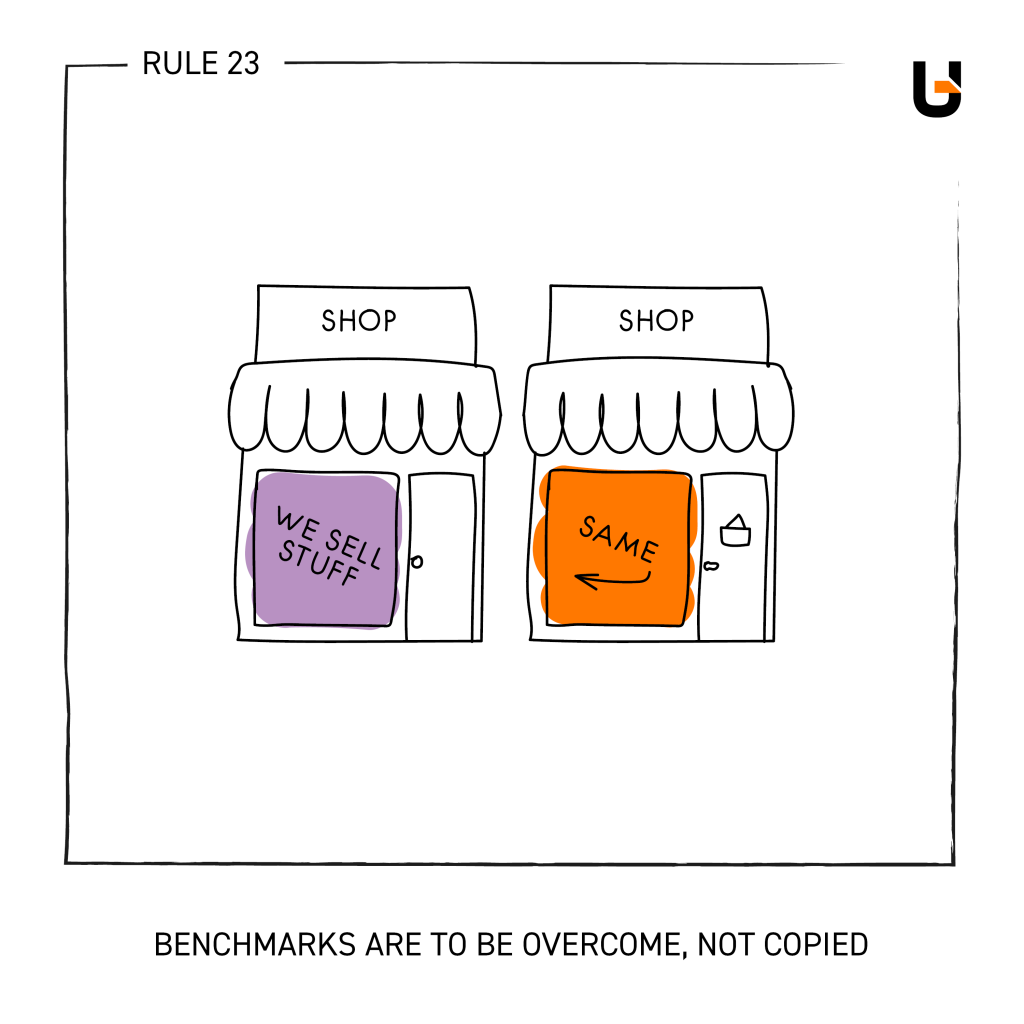
Yet data shows that this is what many customers want. The most popular e-commerce stores, such as Walmart, eBay, Amazon, AliExpress or even Poland’s own Allegro, are typically marketplaces. Even stores that have their independent high street brands – such as the US Walmart or Poland’s Empik – have created marketplaces online.
For people in the furniture sector, this probably isn’t anything new. But for the rest of the online shopping world? Another critical e-commerce trend to watch out for.
Same-Day & Same-Hour Delivery
Speed matters. One of the biggest problems with online shopping has arguably been waiting days for products to arrive. In recent years, we’ve really managed to get this down. We live in a world where a 3-day delivery period is now seen as unusually slow.
Quick Commerce – or Q-commerce for the cool kids amongst us 😉 – takes a number of forms, as different products have different expectations. The average customer can wait 24 hours for their new sofa to arrive, but that’s out of the question for a pizza.
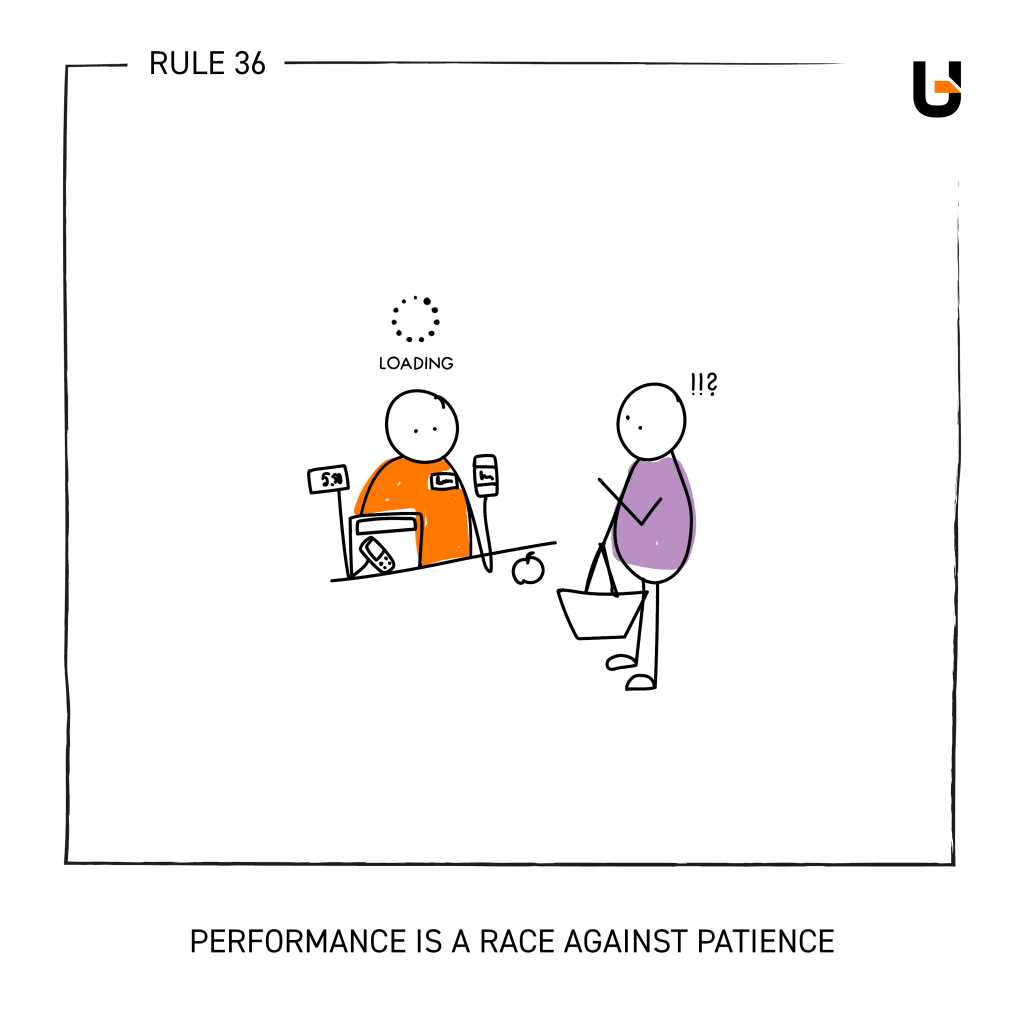
For the latter there are a couple of means – either investing heavily in your own delivery infrastructure or making the most of third-party solutions in every region – to get small deliveries down to 30 minutes. Parcel lockers, similarly, can get other deliveries down to a day or two, with the added benefit of convenience on the customer’s time.
E-Commerce Trends 2024… What Does This All Actually Mean?
These are just some of the biggest trends e-commerce businesses can expect next year, but that’s just our humble prediction. In doesn’t’ mean, of course, that you should panic and implement everything.
Every vertical is unique and each development will impact it in a different way. Focus on the big wins first: the developments that have a direct line to value and impact. Don’t just implement AI for AI’s sake. There are always going to be new developments in e-commerce and smart leaders need to be able to identify the trends that have the biggest potential for ROI, whether that’s through saving their own teams time and headaches, or opening new channels, markets and/or customers.
Or at the very least, they should know who to turn to and ask for such advice 😉
